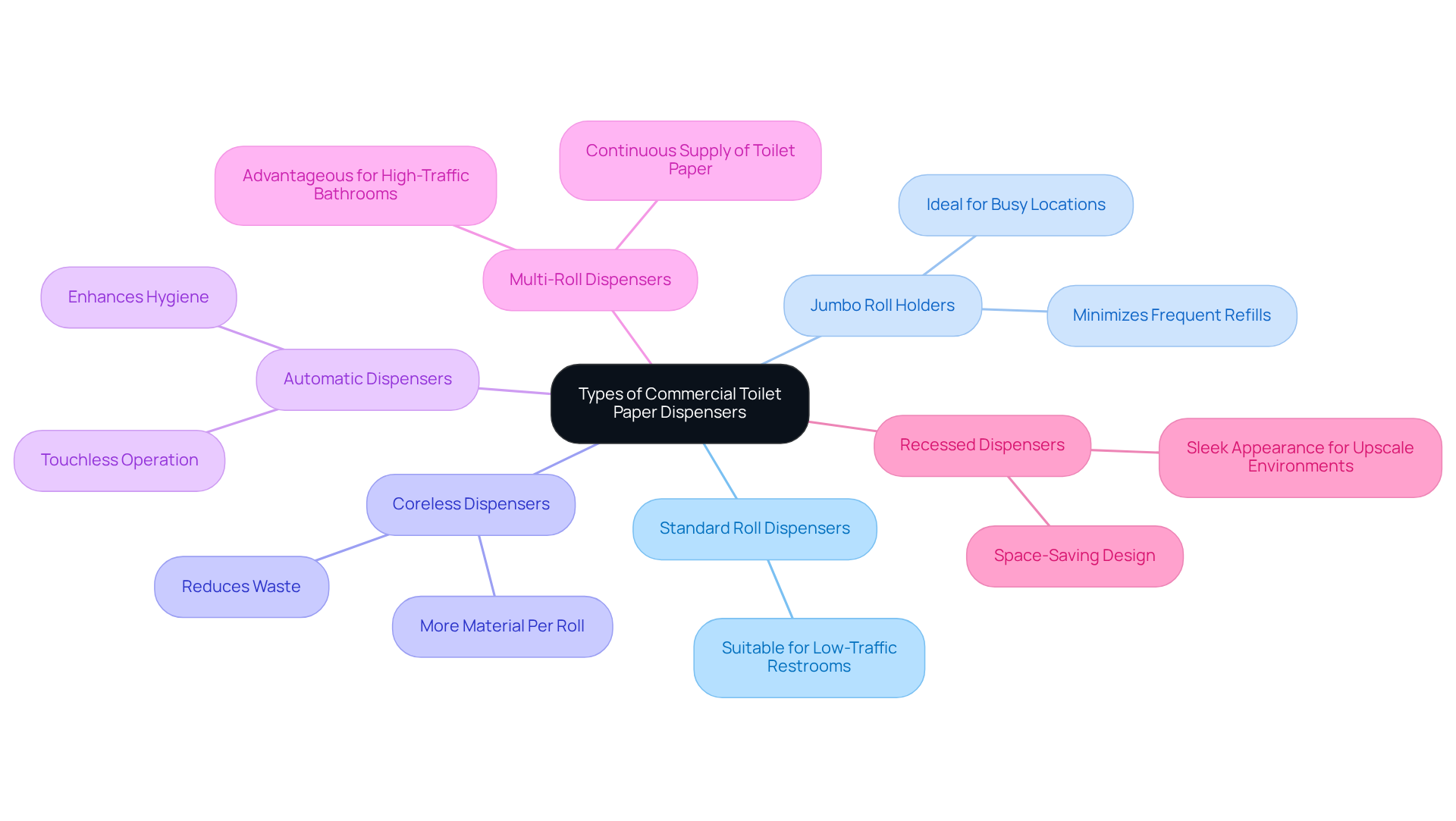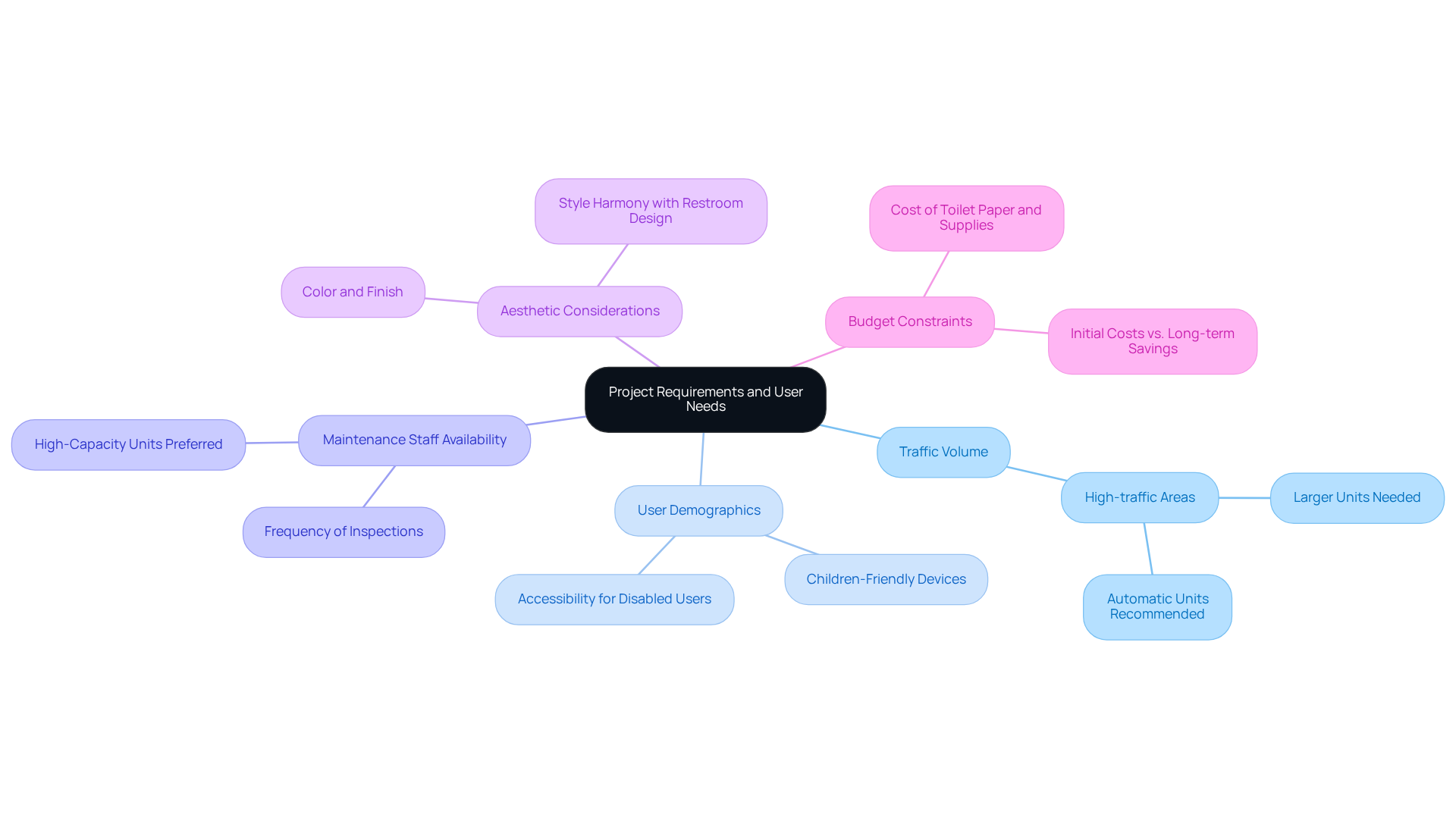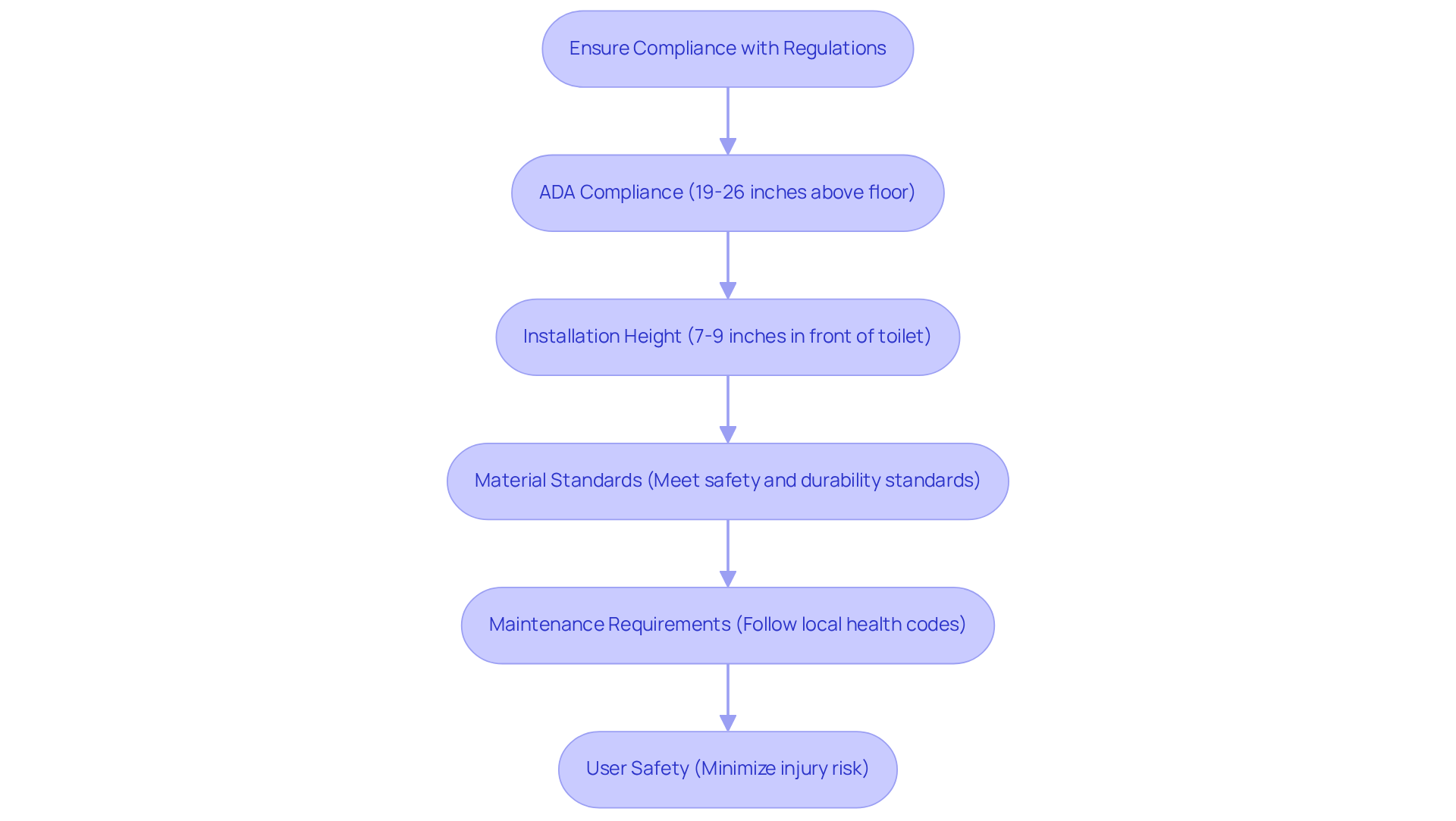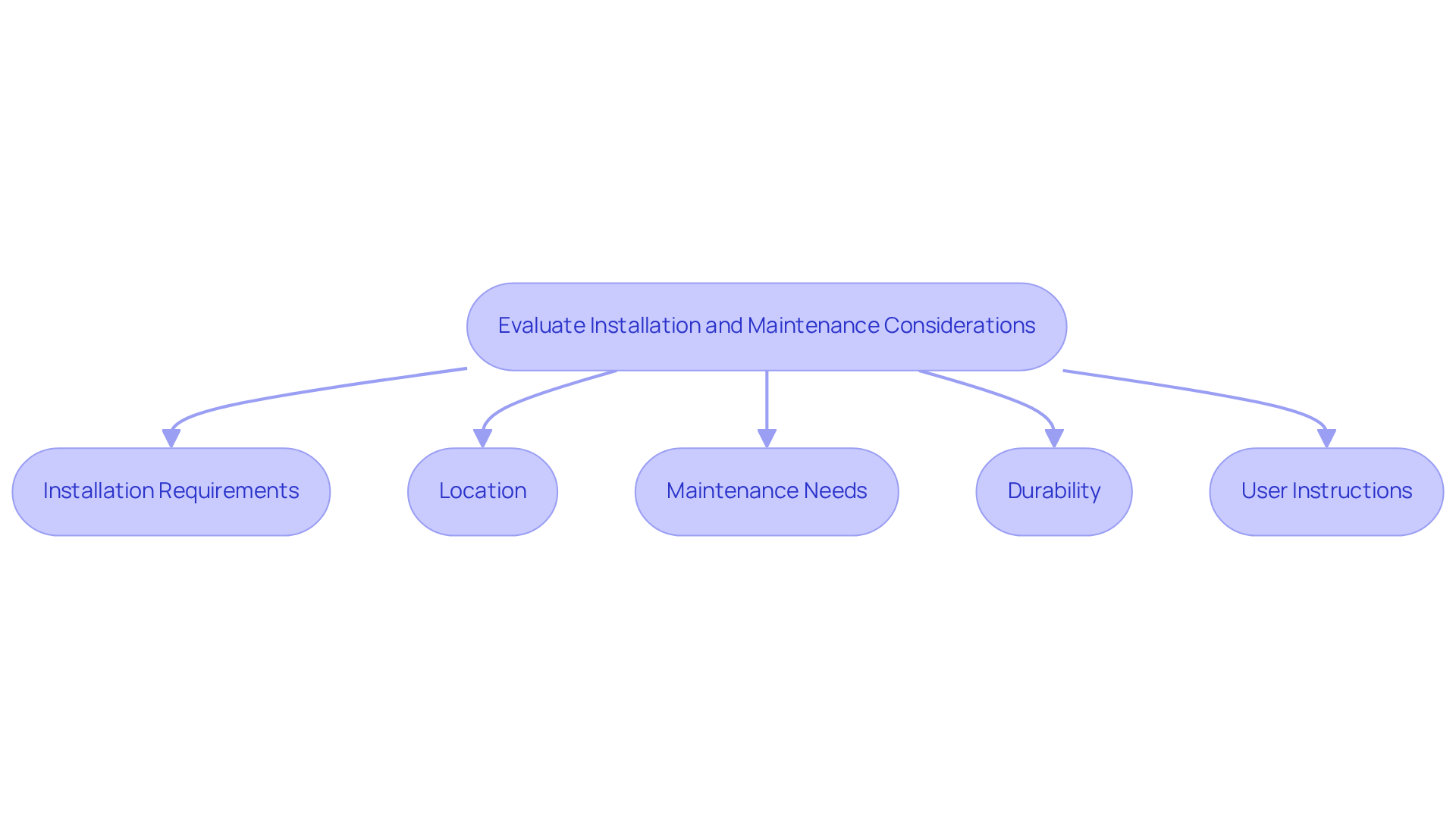Overview
Selecting the appropriate toilet paper commercial dispenser necessitates careful consideration of several factors. First, identify the specific type of dispenser required for your project. Next, assess the project requirements, ensuring that your choice aligns with user needs and operational efficiency. Additionally, it is crucial to ensure compliance with relevant regulatory standards. Finally, evaluate the installation and maintenance factors associated with each dispenser type. This article provides an extensive overview of various dispenser types, user requirements, compliance standards, and maintenance considerations, establishing a comprehensive framework that facilitates informed decision-making for optimal functionality and user satisfaction.
Introduction
Selecting the appropriate commercial toilet paper dispenser is paramount in enhancing the user experience within any restroom facility. With an array of options available—from standard roll dispensers to advanced automatic models—recognizing the unique requirements of a space is essential. How does one effectively navigate the intricacies of functionality, compliance, and aesthetics to make the optimal choice? This guide delineates the critical steps to simplify the selection process, ensuring that each restroom fulfills the expectations of its users while fostering a welcoming environment.
Identify Different Types of Commercial Toilet Paper Dispensers
To begin, it is essential to familiarize yourself with the various types of commercial toilet paper dispensers available:
- Standard Roll Dispensers: These are the most common type, designed to hold a single roll of toilet paper, making them suitable for low-traffic restrooms.
- Jumbo Roll Holders: Ideal for busy locations, these units accommodate larger rolls, significantly minimizing the need for frequent refills.
- Coreless Dispensers: By eliminating the cardboard core, these dispensers allow for more material per roll and contribute to reduced waste.
- Automatic Dispensers: These touchless options enhance hygiene by dispensing materials without physical contact, rendering them perfect for modern facilities.
- Multi-Roll Dispensers: Capable of holding several rolls, these dispensers ensure a continuous supply of toilet paper, which is particularly advantageous in high-traffic bathrooms.
- Recessed Dispensers: Installed into the wall, these dispensers save space and provide a sleek appearance, making them ideal for upscale environments.
By understanding these options, you can better evaluate which type of toilet paper commercial dispenser aligns with the needs and design aesthetic of your facility.

Assess Project Requirements and User Needs
Next, assess the specific requirements of your restroom project to ensure optimal functionality and user satisfaction:
- Traffic Volume: Begin by determining the number of users expected to visit the washroom daily. High-traffic areas may necessitate larger or automatic units to minimize downtime and enhance user experience.
- User Demographics: Consider the primary users of the restroom. Locations frequented by children or individuals with disabilities may require devices that are easier to operate and accessible to all.
- Maintenance Staff Availability: Evaluate how frequently maintenance personnel can inspect and replenish supplies. In scenarios where personnel are limited, opting for high-capacity units can significantly reduce the frequency of necessary refills.
- Aesthetic Considerations: Ensure that the device harmonizes with the overall restroom design. Consider aspects such as color, finish, and style to maintain a cohesive and inviting atmosphere.
- Budget Constraints: Assess the overall expense of the device and the toilet paper it requires. Some devices may entail higher initial costs but ultimately save money over time through reduced maintenance and waste.
By thoughtfully considering these factors, you can select a device that effectively meets both functional and aesthetic needs.

Ensure Compliance with Regulations and Standards
It is essential to ensure that your chosen toilet paper dispenser complies with relevant regulations, thereby establishing a safe and accessible environment for all users.
- ADA Compliance: According to the Americans with Disabilities Act (ADA), devices must be installed within accessible reach. The centerline should be positioned between 19 and 26 inches above the finished floor.
- Installation Height: The device should be positioned 7 to 9 inches in front of the toilet, ensuring easy access for all users.
- Material Standards: Verify that the materials used for the device meet safety and durability standards, particularly in high-traffic environments.
- Maintenance Requirements: Familiarize yourself with local health and safety codes that may dictate how often these devices must be checked and maintained.
- User Safety: Opt for devices that minimize the risk of injury, such as those featuring rounded edges and secure mounting.
By adhering to these regulations, you can create a facility environment that prioritizes safety and accessibility for everyone.

Evaluate Installation and Maintenance Considerations
Finally, it is essential to consider the installation and maintenance aspects of your chosen dispenser:
- Installation Requirements: Review the manufacturer's guidelines for installation; certain devices may require specific tools or mounting hardware.
- Location: Select a location that is easily accessible for users, ensuring it does not obstruct other restroom fixtures.
- Maintenance Needs: Assess how straightforward it is to refill and clean the device, as automatic devices may necessitate more technical maintenance than standard ones.
- Durability: Opt for units crafted from resilient materials that can withstand regular use and sanitization. Stainless steel options are often favored for their longevity.
- User Instructions: Ensure that clear guidelines are provided for users, particularly for automatic devices, to minimize misuse and ensure proper operation.
By evaluating these considerations, you can ensure that your toilet paper dispenser is not only functional but also easy to maintain, ultimately providing a seamless experience for users.

Conclusion
Choosing the right commercial toilet paper dispenser is a crucial decision that significantly impacts user satisfaction and operational efficiency. By understanding the various types of dispensers available, assessing specific project requirements, ensuring compliance with relevant regulations, and evaluating installation and maintenance considerations, one can make an informed choice that meets both functional and aesthetic needs.
Essential factors to consider include:
- Traffic volume
- User demographics
- Maintenance staff availability
It is imperative to select a dispenser that aligns with the restroom's design while accommodating the unique needs of its users. Compliance with ADA standards and other regulations further ensures a safe and accessible environment, while careful evaluation of installation and maintenance requirements guarantees long-term functionality and ease of use.
Ultimately, selecting the right toilet paper dispenser transcends mere convenience; it reflects a commitment to user experience and operational excellence. By applying the insights and best practices discussed, facility managers can create restrooms that are not only efficient but also welcoming and compliant with safety standards. Taking the time to choose wisely will lead to enhanced satisfaction for all users and a smoother maintenance process, reinforcing the importance of thoughtful decision-making in restroom management.
Frequently Asked Questions
What are the different types of commercial toilet paper dispensers?
The main types of commercial toilet paper dispensers are Standard Roll Dispensers, Jumbo Roll Holders, Coreless Dispensers, Automatic Dispensers, Multi-Roll Dispensers, and Recessed Dispensers.
What is a Standard Roll Dispenser?
A Standard Roll Dispenser is the most common type, designed to hold a single roll of toilet paper, making it suitable for low-traffic restrooms.
What are Jumbo Roll Holders used for?
Jumbo Roll Holders are ideal for busy locations as they accommodate larger rolls, significantly minimizing the need for frequent refills.
What is the advantage of Coreless Dispensers?
Coreless Dispensers eliminate the cardboard core, allowing for more material per roll and contributing to reduced waste.
How do Automatic Dispensers enhance hygiene?
Automatic Dispensers are touchless options that dispense materials without physical contact, making them perfect for modern facilities and enhancing hygiene.
What are Multi-Roll Dispensers?
Multi-Roll Dispensers can hold several rolls, ensuring a continuous supply of toilet paper, which is particularly advantageous in high-traffic bathrooms.
What is a Recessed Dispenser?
A Recessed Dispenser is installed into the wall, saving space and providing a sleek appearance, making it ideal for upscale environments.




